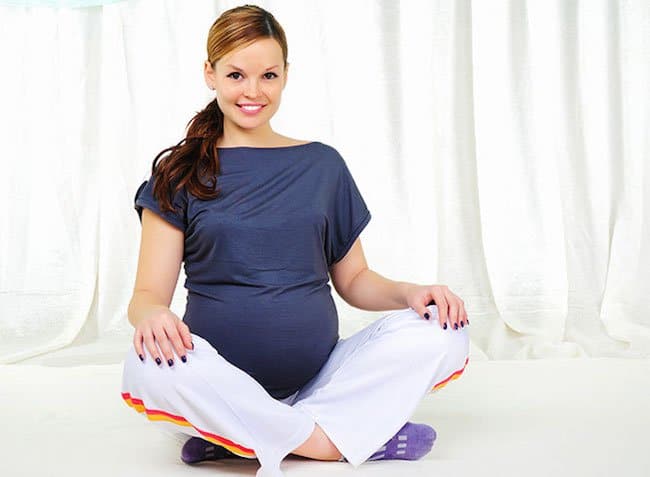
Exercising during pregnancy can have major health benefits for mom to be and the baby. Before starting an exercise program while pregnant, always consult a physician. Every female is different in what she can tolerate during her pregnancy.
Staying fit during pregnancy is more than just monitoring weight gain. In fact, weight gain is normal during pregnancy and is important! According to Mayo Clinic, normal weight (BMI 18.5-24.9) women should gain 25-35 pounds during pregnancy.
It may feel like the last thing you want to do is exercise when you’re pregnant, especially if you have morning sickness or swollen feet. However, choosing exercise over sitting or lying down can help increase energy. Here are some other factors to consider for staying fit during pregnancy.
When?
Exercise in the morning or early afternoons may be better tolerated than late afternoon to evening. Try to go first thing, if possible, before your day gets busy or you can come up with too many excuses to not exercise.
Treat your exercise time as a high priority. Think about the importance it has for your body and for your baby. Schedule it like an appointment and treat it like you would a business appointment.
How much?
The Centers for Disease Control and Prevention (CDC) recommends healthy adults get 30 minutes of moderate exercise most days of the week. According to the American Congress of Obstetricians and Gynecologists (ACOG), most healthy pregnant women can also follow these guidelines.
What should the intensity be?
Moderate exercise is recommended during pregnancy. Moderate exercise is exercise that can be performed and still be able to carry on a conversation. On a scale from 1-10, with 10 being max physical effort and 1 is lying on a couch, moderate exercise is around a 6.
Examples of moderate exercise include brisk walking, leisure bike ride, dancing or an easy jog.
Vigorous or strenuous exercise is exercise that can’t be performed while talking; you only want to say a few words at a time because you are breathing hard. If a woman is exercising strenuously previous to getting pregnant, then she can most likely maintain a more rigorous exercise routine then the ACOG guidelines suggest if monitored by a physician.
Exercising too strenuously could possibly increase uterine contractions, especially in late pregnancy, or possibly affect intrauterine growth restriction according to the ACOG. However, not all research indicates strenuous exercise increases these risks.
Heart rate during exercise and pregnancy is a controversial subject. Some health professionals recommend pregnant women stay under a certain heart rate during exercise for safety reasons. However, the Guidelines of the ACOG suggest the physical changes the circulatory system goes under during pregnancy may alter the accuracy of using heart rate to determine workout intensities.
Types of Exercise
Because of the increased weight gain during pregnancy, joints can have significant more pressure on them. Low impact exercises may be best for joints during pregnancy. Low impact means at least one of your feet is on the ground at all times.
Examples of low impact exercises include:
- Walking
- Dance classes, like zumba
- Aerobics class or DVD (even if they’re not low impact, the instructor should give modifications for low impact)
- Strength training
- Rowing
Exercises that are contraindicated for pregnancy
Pregnant women should avoid exercises in the supine position (lying on the back) after the first trimester. They should also avoid standing for long periods of time as this can alter blood pressure and increase risk of fainting.
Any exercises with an increased risk of falling or abdominal injury should also be avoided. Examples of these include: horseback riding, contact sports like soccer/basketball, gymnastics, skiing, etc.
Benefits of exercise during pregnancy
Exercise is beneficial for cardiovascular health. Exercise can help lower a woman’s risk of gestational diabetes, especially in overweight or obese women.
Some research also indicates that exercise can positively affect the health of the growing baby as well.
Nutrition tips to help you stay fit
From cravings to morning sickness, getting adequate nutrition for the mom to be and the baby can be challenging. General healthy eating tips like eating enough fruits, vegetables, whole grains/ lean proteins and calcium sources apply to pregnant women.
When exercising while pregnant, adequate carbohydrate intake is important. Pregnant women use carbohydrates as a fuel more than non-pregnant women. Exercise increases use of carbohydrate for fuel, so exercising pregnant women need to get enough carbohydrates.
Pregnant women need about an extra 300 calories per day for the growing fetus. If exercising, extra calories need to be consumed.
In conclusion, it may be safe to say almost every pregnant female could benefit from exercise during pregnancy. Make exercise a priority and do it the best time of day when you have the most energy. Try to squeeze in 30 minutes of moderate exercise most days of the week. Low impact exercise, like walking, may be best for pregnancy.
Always talk to a physician before starting an exercise routine while pregnant, especially if sedentary before. If any health concerns occur when exercising like vaginal bleeding or cramping, stop immediately and talk to a physician.
See also: How to lose weight after pregnancy and How to lose the last 10 pounds of pregnancy weight
References used in this article










